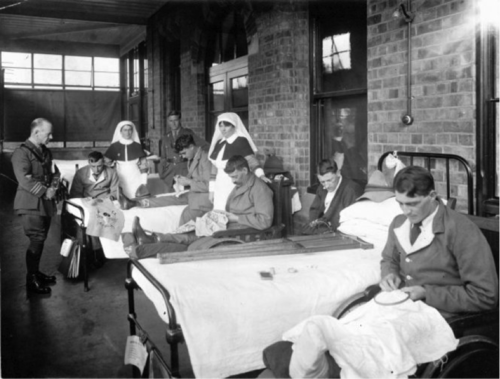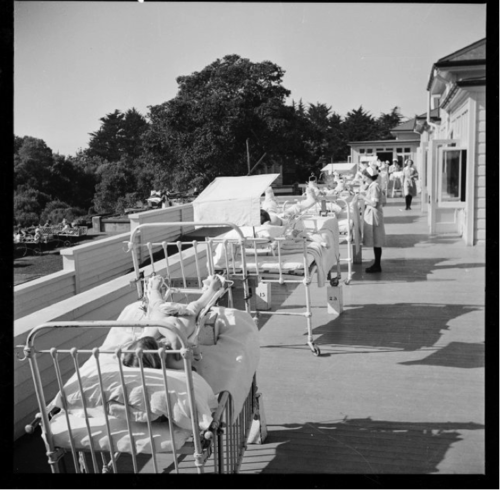The arrival home of disabled soldiers following the First World War challenged the dominant eugenic narrative around disability.
These soldiers exemplified the eugenic ideal of fighting for the empire and their impairment couldn’t therefore be linked with immorality or blamed on faulty genes.
The large numbers of disabled war veterans led to the creation of the new concept of 'rehabilitation', meaning to make fit again.
This was different to the earlier concept of 'habilitation' for genetically deaf and blind people who could potentially be trained to be fit and useful citizens.
Following the Second World War, rehabilitation became strongly linked with employment potential, as in the development of the organisation, the Rehabilitation League, and which still exists today as the employment service Workbridge external.
The general population became increasingly aware of mental illness and physical impairments as experienced by soldiers returning home after the world wars.
The rehabilitation of mentally and physically impaired into society was emphasised. There was a need for better services, including psychiatric treatment, physiotherapy and plastic surgery.
War injuries also helped in the development of improved medical skills such as treatment for burns, plastic surgery and orthopaedics.

Hinge, Leslie, 1868-1942. World War I returned servicemen embroidering [Christchurch Public Hospital]. Ref: PAColl-5932-27. Alexander Turnbull Library, Wellington
Some of the injured came from privileged families, for example, Clutha Mackenzie external, whose father was briefly Prime Minister, and who lost his sight at Gallipoli.
In the 1922 general election he stood unsuccessfully for the Reform Party against the Labour Party’s John A Lee, who had lost an arm in battle.
McKenzie helped develop the New Zealand Foundation for the Blind external (Now Blind Low Vision NZ) and the development of a universal Braille system.
In 1924, legislation was passed allowing a pension for blind people.
In 1935, surgeons founded the Crippled Children’s Society external (Now CCS Disability Action) to deal with physical impairments such as those caused by polio.
It was expensive for families to get this help before the first Labour Government (elected in 1935) established free hospital care.
The 1938 Social Security Act external founded the welfare state with some disability support and pensions.

The Wilson Home for crippled children in Takapuna, Auckland. Photograph taken in 1943 by John Pascoe. Turnbull Library Ref: 1/4-000643-F